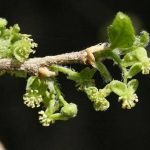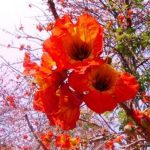TREE LIFE
October 2004
MASHONALAND CALENDAR
Tuesday 5th October. Botanic Garden Walk. Meet in the car park at 4.45 for 5 pm. Note that summer has returned so the walks revert to Tuesday evenings.
Sunday 17th October. A visit to the Mutoroshanga area where Barbera Scheitler of Maringambizi Nature Area is our hostess.
Saturday 23rd October. Mark’s walk will be on Mrs Mick Fleet’s property in the Glen Lorne/Umwinsidale area. We will meet at 2.30 pm. at the homestead.
Tuesday 2nd November. Botanic Garden Walk.
MATABELELAND CALENDAR
Sunday 17th October. The next outing will start from the Timberlake’s home on October 17th, 7.30 am sharp.
Extract from The Matobo Conservation Society Newsletter.
TREE WEEKEND
The Society is arranging a special weekend focusing on tree identification. This will not be a general outing but a specialized event for those who want to learn more about the botany of the Matopos. The outing will be held at Camp Dwala in the eastern Matopos where just under 200 tree species and 1,000 plant species have been identified. Mr Roy Stephens will lead the identification walks. The weekend will start with a social braai on the evening of Friday 22nd October, a series of walks on both Saturday and Sunday, ending on Sunday afternoon. Those who are interested should contact Des Stephens on 091 211 156 to book accommodation.
LOOMING NAME CHANGES
IN THE GENUS ACACIA
The purpose of this short article is to describe the name changes which are likely to take place in the genus Acacia in the near future and the reasons for them. These changes are likely to be significant as far as we in Zimbabwe are concerned.
As background, Acacia is the second largest genus in the Leguminosae with 1352 species. (Note, in all the following that Acacia albida has already been excluded from Acacia as the genus Faidherbia and that position remains unchanged).
In brief, it has been proposed, based on work by Pedley [1] and later authors [2] that the genus Acacia should be split into 5 genera, namely: Acacia sensu stricto, Senegalia, Racosperma, Acaciella and an as-yet-unnamed genus.
The type species of Acacia is what is now called Acacia nilotica. Accordingly, based on the application of botanical types, the numbers in each new genus would be as follows:
| Genus | Number of species |
| Acacia s.s. | 161 |
| Senegalia | 203 |
| Racosperma | 960 |
| Acaciella | 15 |
| Un-named genus | 13 |
| TOTAL | 1352 |
For those of us in Zimbabwe, the effects of these changes would be:
� a group of native species, which belong to Acacia sensu stricto, and which include A. nilotica, would retain the name Acacia;
� the remaining native species would be transferred to the genus Senegalia;
� a number of the exotic Australian species which occur as weeds would move to the genus Racosperma.
However, apart from the changes for scientific reasons, a further paper by Orchard and Maslin [3] contains a proposal to change the type species of the genus Acacia from Acacia nilotica to Acacia penninervis, a species with phyllodes from Australia. This species is now part of what would have become Racosperma under the changes above.
The argument of Orchard and Maslin is that the change of type would minimise the name changes required overall. In particular, there will be no need to change all the 960 Australian species to become Racosperma. There are further arguments based on the economic importance of certain Australian species and the fact that Racosperma is a neuter noun (despite the fact that it ends in a) so that further confusion would be caused by the specific names not ending in a e.g. Racosperma aduncum).
If this proposal is accepted, the Acacia sensu stricto group of acacias referred to above, which included A. nilotica, will be transferred to Vachellia. This results in further unfortunate name changes for us.
To summarise, the revised implications for us in Zimbabwe are therefore:
� the group of native species, which used to belong to Acacia sensu stricto, and which include A. nilotica, would be transferred to the genus Vachellia;
� the remaining native species would be transferred to the genus Senegalia;
� a number of the exotic Australian species which occur as weeds would remain unchanged as Acacia.
It is not known to me whether Orchard and Maslin’s proposal has been accepted nor, even it has been, whether it will receive the further ratification it requires. I furthermore doubt whether the necessary combinations in Vachellia and Senegalia have yet been made, so it may be a while before all these changes come into practical effect.
I am most grateful to Jonathan Timberlake for alerting me to these changes and for sending me a copy of Orchard and Maslin’s paper [3] from which most of the content of this article has been taken.
[1] Pedley (exact citation not known) in Bot. J. Linn. Soc. 92: 219-254. [2] Maslin, Miller and Seigler in Austral. Syst. Bot. 16: 1�18, 2003. [3] Orchard and Maslin in Taxon 52: 362-363, 2003.-Mark Hyde
BOTANIC GARDEN WALK: 7 AUGUST 2004
With Tom still away and Meg unavailable, it was your Chairman who stepped in to lead the August Botanic garden walk, at its winter time of 11 a.m. on Saturday morning.
There was no particular theme; we just walked and stopped to look at anything of interest. Our first tree was the Tamarind, Tamarindus indica.
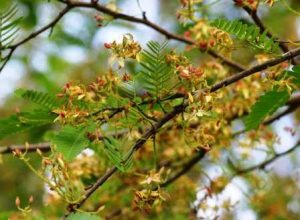
Tamarindus indica. Photo: Bart Wursten. Source: Flora of Zimbabwe
This is a legume, belonging to the subfamily Caesalpinioideae. This subfamily contains a diverse range of species ranging from Caesalpinia itself, to the miombo woodland species of Brachystegia and Julbernardia and also includes Bauhinia and Mopane. It is a very varied group of species and to me seems a much less satisfactorily defined group than the Mimosoideae and the Papilionoideae.
The Tamarind has 1-pinnate leaves which are paripinnate (i.e. they lack the apical leaflet and end in a pair). The fruit is a small but thick and pendulous pod. There is a well-known controversy which has been aired in Tree Life before as to whether it is native to India (and hence an alien in Africa) or native to Africa. I can’t really add anything to the debate.
On next to the forest edge where Newtonia buchananii grows. This is a Mimosoideae and as is typical of species of this subfamily has masses of small flowers arranged in an inflorescence (in this case a spike) and 2-pinnate leaves. The pods dehisce down one angle only and the two valves remain attached along the other. Without doubt this is a beautiful tree, occurring with us in medium and low altitude forests in the Eastern Division of Zimbabwe.
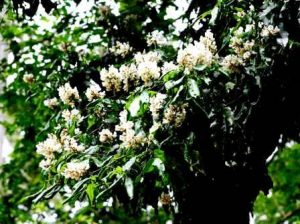
Craibia brevicaudata. Photo: Bart Wursten. Source: Flora of Zimbabwe
Nearby was Craibia brevicaudata. This belongs to the third legume subfamily, Papilionoideae, which is incidentally by far the biggest in terms of number of species. No flowers were on this specimen but had they been there we would have seen the typical papilionoid flower structure of standard, wings and keel.
Again, because of the flower structure, this is a very readily recognizable group across thousands of species (although I am aware that there are borderline cases such as Swartzia which don’t fit easily into any one subfamily).
Craibia is another forest species. It is particularly abundant in Chirinda Forest and parts of the Vumba and has beautiful white pea-flowers. It has now become a garden plant and it is occasionally seen in gardens as, for example, at Old Mutual’s head office on The Chase in Emerald Hill.
Apart from the legumes, some very early-flowering spring flowers were in evidence. Firstly, the very beautiful and striking Fernandoa abbreviata (this, and the closely related F. magnifica) will be the subject of a later write-up in Tree Life). Secondly, the very striking red-flowered Combretum paniculatum. This is a climbing forest species with brilliant red flowers and, also, red fruits. In the Botanic Gardens, it has nothing to climb on and so it forms a sprawling shrub throwing out long tentacle-like branches.
The walk finished with a stroll through the forest up into the E Highlands grassland section. What an amazing resource the Botanic Gardens are, we are very lucky to have such a facility.
-Mark Hyde
BULAWAYO BRANCH OUTING OF SEPTEMBER 19TH 2004
Members met at Mrs. V.A. Deas at 7.30. Apart from Val who was leading the group from her house to the lower part of the circular drive area we had Jonathan & Jenny Timberlake, Gill Short, Joy Kets, Gay Walker, Yollande & myself.
The weather was fine at that time of the morning and we reached the Ficus glumosa marking the start of our walk in a very short time.
The area we wanted to look at is the side and bottom part of a hill that extends from the Circular drive itself to a tributary of The Little Umgusa River. Our exploration was centred on a Ficus glumosa situated at 2012 559 South by 28 38 464 East.
The white flowers of the Dombeya rotundifolia dominate the scene; the pointillist effect is accentuated by the colourful Pseudolachnostylis maprouneifolia
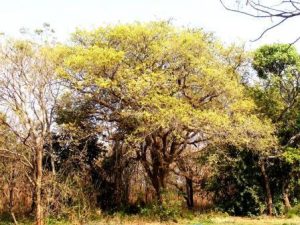
Pseudolachnostylis maprouneifolia Photo: Mike Bingham. Source: Flora of Zimbabwe
which are particularly interesting at this time, their leaves can be anything from red to orange, to yellow and even green where subterranean water subsist. From place to place the crimson splash of the flowers of the Erythrina latissima contrasting on the black of their otherwise bare branches add a touch of drama to the picture. Lower down the plum-coloured Flacourtia indica stands out against a background of assorted greens and yellows provided by the Turraea nilotica, the Carissa edulis, the Bridelia mollis as well as a few Ormocarpum trichocarpum and some Combretums..
A few lone Cussonia natalensis still in their winter mourning dress, tentatively sprout some tender green shoots while the Pterocarpus angolensis still devoid of leaves but laden with fruits display their palette of assorted browns.
The Ficus family is represented by a fair number of Ficus glumosa and Ficus ingens (some of which are in fruit) with the occasional Ficus thonningii.
Jonathan explained how to differentiate between the three varieties of Acacia growing there, namely Acacia karroo, Acacia nilotica and Acacia rehmanniana.
Our group identified a total of 49 species during that walk.
This was our first outing since June 2002 and all present were very enthusiastic.
CHRISTON BANK: 15 AUGUST 2004
Christon Bank, like Domboshawa, is an old favourite of the Tree Society. A convenient distance from Harare, it is also of great interest botanically, and it was to this regular stand-by that we turned for our August walk.
The plan was to park in the car-park and walk down through the reserve to the Mazowe River where we hoped to re-find the special of the area, Teclea rogersii.
Jack Jaklitsch kindly acted as leader for the day while I was botanical leader. At first our walk took us through large boulders and rocky slopes and here we were able to compare two closely related species which occur in this habitat, namely Tetradenia riparia(the Ginger bush) and Plectranthus sanguineus. These plants are both Lamiaceae but when seen together are not really all that similar the reason for discussing them is that I have seen good botanists muddle them up as I have as well.
In flower, they are unmistakable. Tetradenia tends to have a large, often pyramidal inflorescence of numerous flowers. Plectranthus has a much smaller more spike-like inflorescence with relatively few, less strongly-coloured, flowers.
A spot-character of the Plectranthus is that if you squeeze the flower head, your fingers come away stained a dark orange-brown, whereas Tetradenia has no such feature. It’s not really a red colour though, as the name might suggest. The demonstration of this worked well on the day.
After the rocks we came to a more open, drier area, rather less interesting and then entered the riverine fringe. The Mazowe is at quite a low altitude, namely 1260 m, which is 100m below the car park and about 250 m below Harare.
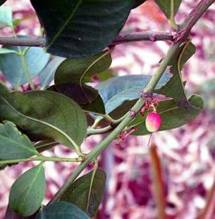
Acokanthera oppositifolia. Photo: Rob Burrett. Source: Flora of Zimbabwe
A very pretty plant in flower here was Acokanthera oppositifolia. This has opposite leaves, as the name suggests, and inflorescences of numerous pinkish-white flowers arise from the base of the leaves. The plant has milky sap.
Gold panners have been very active by the Mazowe and there were numerous signs of human activity frequent deep pits gouged out of the banks although no people were actually seen.
Here too grows the Teclea. It was easy to find and seems quite common but at this time of the year, no flowers or fruits were seen. It appears as a 3-foliolate shrub with translucent gland dots in the leaves which are visible when the leaf is held up to the light. Another species recorded for here is Chionanthus battiscombei (Oleaceae) but we were not able to re-find it.
A rather local species is Osyridicarpos schimperianus, a slender climber with greenish-yellow flowers and weak angular stems was to be seen scrambling in the vegetation. Amongst the riverine plants was Friesodielsia obovata and Diospyros nummularia the latter is more normally found in rocky places. Another typically riverine plant was Englerophytum magalismontanum (the Stem fruit).
As with so many moist areas close to Harare, the river valley has been invaded by various weeds. Macfadyena unguis-cati (the cat’s claw creeper) was there sending its stems up the trunks of trees. The terribly invasive silverleaf (Desmodium uncinatum) was also common. Another climbing species seen was Cardiospermum grandiflorum and amongst the shrubs were Jacaranda mimosifolia and a yellow-flowered shrub with black pods, Senna septemtrionalis.
All in all, it was a very pleasant walk and an interesting day botanically.
-Mark Hyde
THE PETHERAM FILES Continued.
Trees of Mystery and Discord
In the Buhera and Marondera districts, and, I am told, elsewhere, are trees without a name (muti-usina-zita), so called by the local people because of their rarity in those particular areas. Cleistanthus schlechteri of Buhera, and Schrebera alata of Marondera do occur elsewhere in the country, but where they are so strangely isolated they are regarded with awe and superstition.
[Comment 2002: The isolated occurrence of a grove of an incompletely identified Albizia at Sandilboom Farm near Headlands also falls into the category of trees once regarded with awe and superstition. These trees are known locally as muti-mumwe (another tree), and were initially identified as A. forbesii, a species that occurs from the southeast lowveld southwards to the Mozambique and Kwazulu-Natal coasts. There is a tenuous belief, now, that they might be hybrids, possibly between A. amara and A. antunesiana, but, as no complete herbarium material appears to have been collected, the belief cannot finally be proved. Perhaps a Tree Society visit to the grove should be arranged when the trees are in flower, and again when mature pods should be present.]Before moving away from trees shrouded in mystery, I must mention again the indaba tree of Penhalonga, which is equally celebrated as the Pioneer Nurses Memorial Tree. I quote from the report of the Mutare Boys High School History Society: The Indaba Tree, Penhalonga: apparently Ficus buddha, or Morton Bay Fig. It stands on the present site of the Nurses Memorial. The late Sir Ian Wilson had an interesting theory as to the origins of these trees, which are scattered throughout the Penhalonga Valley. He noticed the frequency with which they occur at the opening of ancient mines their evergreen, dark green, shiny leaf makes them very prominent in winter. He suggested that the Arab traders came inland in winter only (to avoid the rains and diseases of the summer), and therefore needed some form of marker to return to [in] the following winter. It was these trees that were used as markers
The Indaba Tree of Penhalonga is reputed to have been used as such by Chief Mutasa. Certainly in 1890, before the arrival of the Pioneer Column, Mr Campion (manager of the Bartisol Mine nearby), built his hut under its branches. It was here that the nurses, Rose Blennerhasset, Lucy Sleeman, and Beryl Welby first stayed after their walk up from Beira in July 1891. Incidentally, the plaque at the site is not strictly correct, in that the first hospital was opened in September 1891, not at the site but immediately across the valley on Fort Hill.
Furthermore, the present tree is not the original. In 1948 a swarm of bees settled in the trunk, and Africans, to get the honey, set fire to the tree. It was pruned and propped up, and seemed to recover, but in 1953 it was struck by lightning. In the same year an offshoot of that tree was planted by Dr W Alexander, and it is this that stands in good condition today.
[Comment 2002: There are, in fact, three specimens of this fig tree at the Pioneer Nurses Memorial, all reputed to have been raised from shoots of the original after it had been struck by lightning. In October 1985 the largest of the three had a diameter of 138.7 cm at breast height, and a crown spread of about 30 metres.]That ends the School’s report on the tree. The epic journey of Sister Blennerhasset and her companions by launch from Beira up the Pungwe to Macequece, thence on foot about 225 km to Penhalonga, where they arrived with their feet in bandages, is well worthy of a living memorial such as this, and I am glad to confirm that the offshoot, now a sizeable tree, is indeed in good condition and well cared for.
[Comment 2002: The story of the three pioneer nurses was told by Rose Blennerhasset and Lucy Sleeman in their book Adventures in Mashonaland, originally published in 1893, and subsequently reprinted as Volume 8 in the Books of Rhodesia Gold Series. They traveled by boat from Beira to Mapanda (Mpandas), not Macequece, as Dick Petheram had it, and their walk from there to Penhalonga took them two weeks, 1-14 July 1891.]As to the identity of the tree, I think I can positively say that Mr Bob Drummond is quite satisfied that the leaf specimens we brought back from the Indaba Tree are those of Ficus nekbudu, which is indigenous. He was kind enough to show me a book on Australian shrubs and trees, and more specifically an illustration of the so-called Morton Bay Fig, which is, botanically, Ficus macrophylla. It is described as the greatest of the Australian avenue trees, and to the layman there is a distinct similarity between it and the beautiful, large-leafed nekbudu. It is understandable, therefore, in view of the association of F. nekbudu with ancient workings, that theories such as that of Sir Ian Wilson should have evolved.
[Comment 2002: The correct name of Ficus nekbudu is now F. lutea, but it is easy to understand how the compilers of the school report managed to write F. nekbudu as F. Budda (!), but it is more difficult to work out why they thought this was the Australian Morton (sic) Bay Fig. The correct spelling is Moreton Bay, and Dick Petheram had the correct botanical name in his comments.]The school’s findings were published in the Umtali Post in August, and gave rise to the most lively debate, in letters to the Editor, on the subject of the Nurses Memorial Tree at Penhalonga. In suggesting that this tree did not, in fact, mark the site of the first officially recognized hospital in the area, Mr Barnes incurred the wrath of Mrs Mary Alexander and Stephanie Maritz. Not only that, but he compounded the felony in his response to the initial criticism by writing and here I quote from the Umtali Post this is not the only memorial in Manicaland that is obscure, inaccurate and incomplete; to mention the others now, however, would turn the present warm glow of dissonance into a blazing bonfire of discontent. Well, the replies to that almost caused instantaneous combustion in a September issue of the paper, and it is with utmost trepidation that I confess that Mr Barnes’s words struck a sympathetic chord not, I hasten to add, in relation specifically to Penhalonga, but in general terms. Like one or two of Zimbabwe’s earliest alleged gold strikes, some claims concerning alleged historical trees turn out, when explored, to be a trifle fanciful. A little mythology doesn’t come amiss, but a modicum of substance here and there would lend some welcome credibility.
To be continued.
MARK HYDE CHAIRMAN


